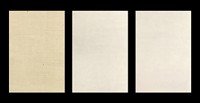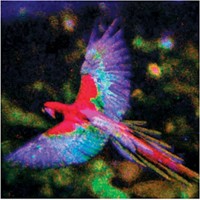Advertisement
Grab your lab coat. Let's get started
Welcome!
Welcome!
Create an account below to get 6 C&EN articles per month, receive newsletters and more - all free.
It seems this is your first time logging in online. Please enter the following information to continue.
As an ACS member you automatically get access to this site. All we need is few more details to create your reading experience.
Not you? Sign in with a different account.
Not you? Sign in with a different account.
ERROR 1
ERROR 1
ERROR 2
ERROR 2
ERROR 2
ERROR 2
ERROR 2
Password and Confirm password must match.
If you have an ACS member number, please enter it here so we can link this account to your membership. (optional)
ERROR 2
ACS values your privacy. By submitting your information, you are gaining access to C&EN and subscribing to our weekly newsletter. We use the information you provide to make your reading experience better, and we will never sell your data to third party members.
Environment
Dye Nanoparticles Aid Water Analysis
Affixed indicator dyes may yield more reliable test strips for heavy metals
by Stephen K. Ritter
January 9, 2006
| A version of this story appeared in
Volume 84, Issue 2

A new method generates ion-selective dye nanoparticles and immobilizes them onto cellulose membrane filters so they won't leach or rub off (Angew. Chem. Int. Ed., published online Dec. 29, 2005, dx.doi.org/10.1002/anie.200503015). The process is expected to significantly improve the reliability and sensitivity of popular colorimetric test strips used for inexpensive on-the-spot screening for toxic heavy metals in water.
Paper test strips impregnated with water-insoluble organic indicator dyes are generally prepared by soaking filter paper in a dye solution and then drying. But the dyes' tendency to leach easily from the test strips can reduce their effectiveness. And tighter environmental and drinking-water standards are requiring ever-lower detection limits that are becoming out of reach for current test strips.
Yukiko Takahashi and Toshishige M. Suzuki of the National Institute of Advanced Industrial Science & Technology, in Sendai, Japan, and their coworkers discovered an effective way around these problems. The team fabricates nanosized dye particles by dissolving common dyes in an organic solvent and injecting the solution into vigorously stirred water. The dyes precipitate as finely dispersed nanocrystals, and when filtered, the nanoparticles stick to the cellulose fibers of the membrane filter and don't let go.
In one example, the researchers dipped 1-(2-pyridylazo)-2-naphthol test strips into standard solutions to visually detect Zn2+ at concentrations as low as 65 ppb. They detected Zn2+ at less than 1 ppb by pouring solutions through a membrane filter. In another example, they used dithizone test strips to detect Hg2+ down to 10 ppb.
"The key features of this technique are its simplicity, high sensitivity, and applicability to a wide variety of functional reagents," Takahashi says.






Join the conversation
Contact the reporter
Submit a Letter to the Editor for publication
Engage with us on Twitter